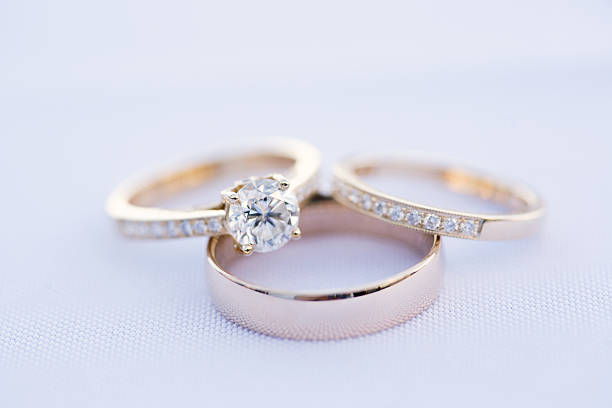The 4 C's Of Diamond Quality All Entries

Diamonds come in a wide range of sizes, colors, and shapes. Because of this, it's important to know how to check diamond quality before making a purchase. According to the AGS, all diamonds have value. You want to be able to have the assurance that the diamond quality you paid for is balanced with the gem quality you are getting.
Experienced jewelers have expertise in appraising diamond quality by using a systematic rating system for characteristics of diamonds. However, it's also helpful if you know a little bit about diamonds as before purchasing or selling any.
The 4 Cs To Diamond Quality
Color
Clarity
Cut
Carat (weight size)
Carat - Weight Of Your Diamond
When it comes to the 4 C's of diamond quality, the carat or weight of the diamond is the most objective. The diamond would be weighed on a digital scale that will measure the weight of the diamond.
It's important to note that while carat weight is important, it's not the final say in the value of diamond value. A 2 carat diamond which is of a lesser quality, cut, or clarity will be considered of less value than a 1 carat diamond of better cut, clarity, and quality.
Color Of Your Diamond
The color of a diamond can have a huge impact on its value. A diamond that has zero colors is called a colorless diamond. Its grading scale would be D-F and would be considered of higher value. As you move down the scale, the more tints of colors you notice the more the diamond decreases in value.
Fancy diamonds are different than diamonds with tints of color in them and can be extremely rare and exceptionally valuable.
Some of the most famous fancy colored diamonds include: Allnatt, Dresden Green, Heart of Eternity and the ever-popular Hope Diamond.
The color grading scale is as follows for diamonds:
Colorless - D-F
Near Colorless - G-J
Faint - K-M
Very Light - N-R
Light - S-Z
Clarity Of The Diamond
Clarity is another characteristic which plays a large part in the diamond quality. A flawless diamond with absolutely no imperfections is going to be worth more than a diamond with flecks, chips, or poor clarity.
According to the AGS, a diamond with higher clarity is considered rarer in nature, which is why it makes it more valuable than a cloudy or chipped gem.
(FL) diamonds have no inclusions.
(IF) diamonds have no internal inclusions but may have slight surface blemishes.
(VVS1) and (VVS2) diamonds have minute inclusions difficult to see.
(VS1) and (VS2) diamond have minor inclusions detected easily under magnification.
(SI1) and (SI2) diamonds have noticeable inclusions under magnification.
(I1), (I2), and (I3) diamonds have obvious inclusions easily visible to the naked eye.
Cut Of The Diamond
Lastly, we have the cut of the diamond. This is about the aesthetic appeal more than anything else. There are 3 aspects a jeweler will consider when looking at the cut of a diamond: brightness, fire, and scintillation.
Cuts also have a grading scale of 0 to 10. 0 grades are considered ideal cuts while diamonds on the 8-10 scale are considered poor cuts.
If you are interested in selling your used jewelry or have questions, visit Ralph Mueller & Associates or call 480.949.9229